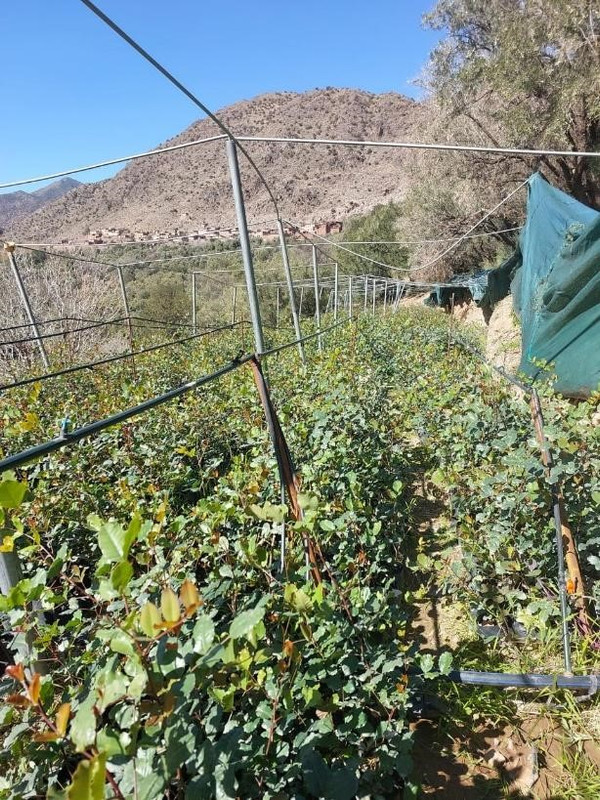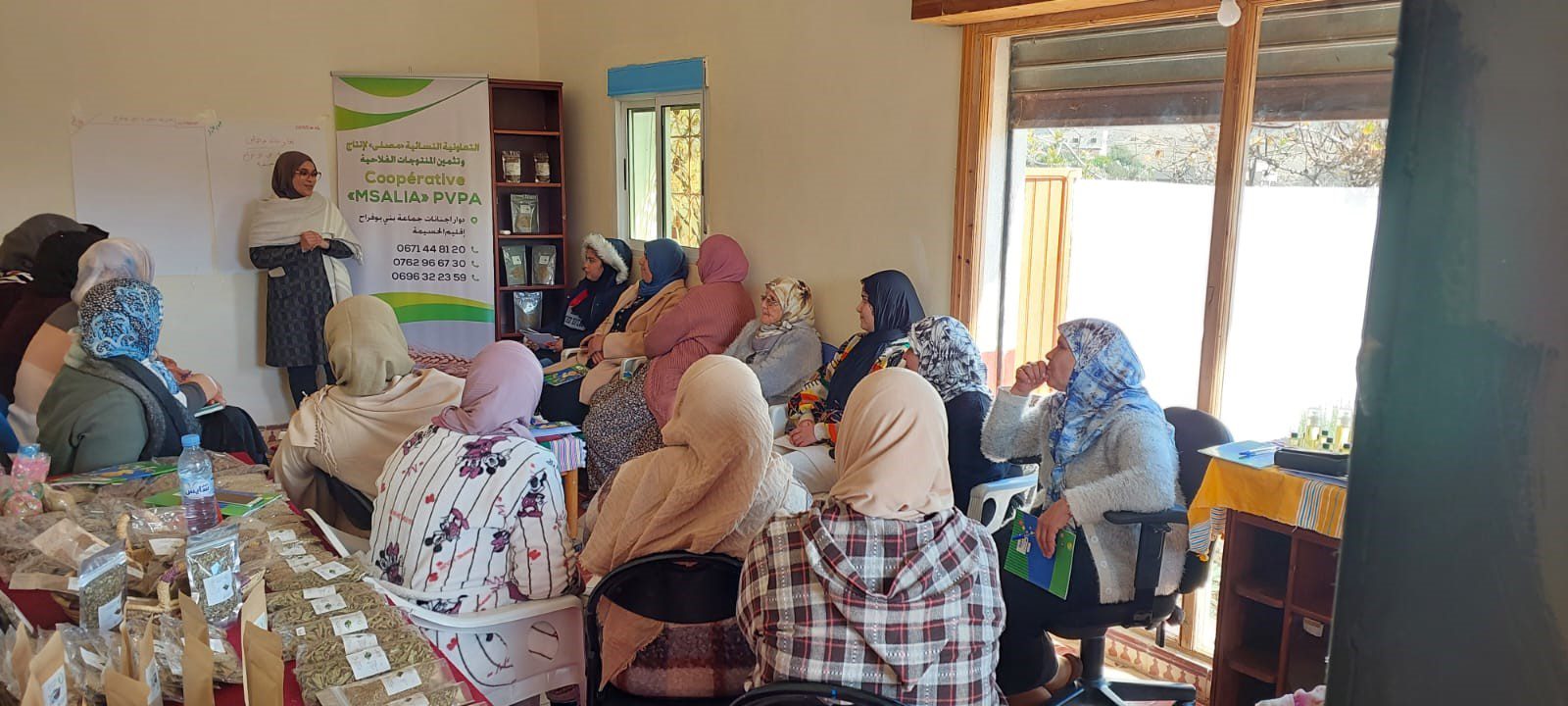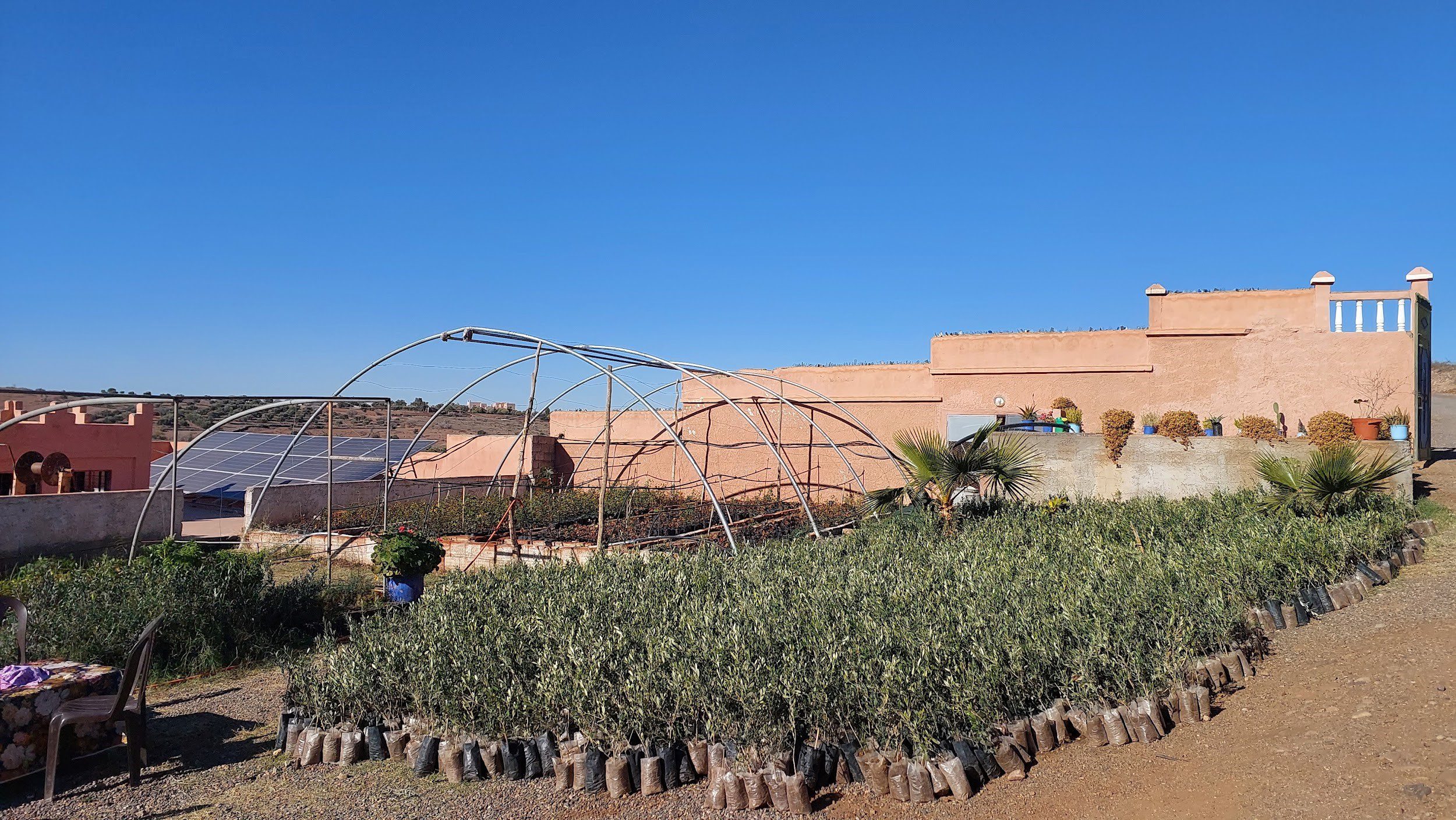By Ibtissam Niri
HAF M&E Program Assistant and Empowerment Coach

“Is this the same nursery land that I visited in 2020?” This is how my conversation started with Hassan Ait Baa in front of the nursery door during my visit to the Imegdal nursery.
“No, it’s another one. This nursery emerged as a result of the training conducted by the Farmer-to-Farmer Volunteer – I forgot his name exactly – in January 2020,” Hassan the nursery caretaker said.
On February 10, I visited the Imegdal nursery to do an impact assessment to know how well the assignment went and how they may have benefitted from the training provided by William Nichols, a Volunteer-Expert of the USAID F2F Program, an initiative implemented by the High Atlas Foundation in Morocco.
William is the fourth F2F Volunteer HAF engaged in providing technical assistance on best nursery management practices, which was a 15 day assignment in January 2020.
After a two-day workshop, the volunteer provided recommendations for the cooperative related to the water supply and the determination of solutions most suited to this situation. This includes covering the existing water basin, building a second basin, pumping water from the river below the nursery, selecting a source of quality soil for planting olive trees, and creating a budget for the purchase and transport of soil, sand, and natural fertilizer, and finally arranging for and accepting these inputs.
HAF assisted the Imegdal nursery team to conduct a cost/benefit analysis of these options and in installing a greenhouse. Additionally, William gave them ideas during the workshop to increase the nursery’s productivity. One of the ideas is about changing the nursery land from its first location which was over a valley to another flat ground without hills.
In the year 2021, 70,000 carob seeds were planted, and 60,000 of them were distributed to either local or national communities. In the previous land, 60,000 seeds of Argan and carob were planted in 2020, but only 20,000 of them were ready for distribution.
In 2022, the nursery comprised 30,000 Argan seeds, 44,000 carob seeds, and 10,000 walnut seeds. 76,000 will be distributed by the end of March 2023.
Since the volunteer’s visit and guidance to the host, the survival rate has increased from 18% to 74%.
Based on the F2F volunteer’s recommendations, in addition to the efforts of the host organization’s staff, we obtained a good model of a fruit tree nursery. It grows thousands of trees annually that are distributed to communities and villages in the region.
Three years have passed since Mr. William’s visit, but the impact of his visit remains.





